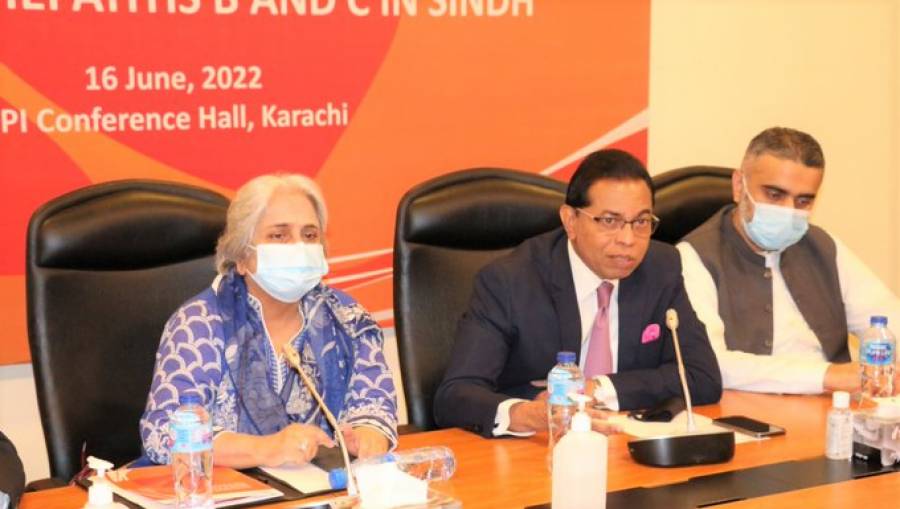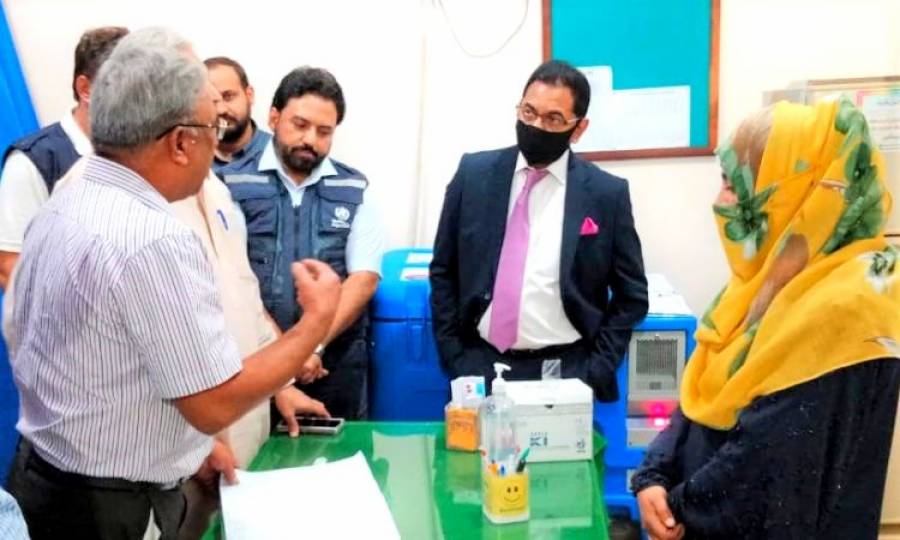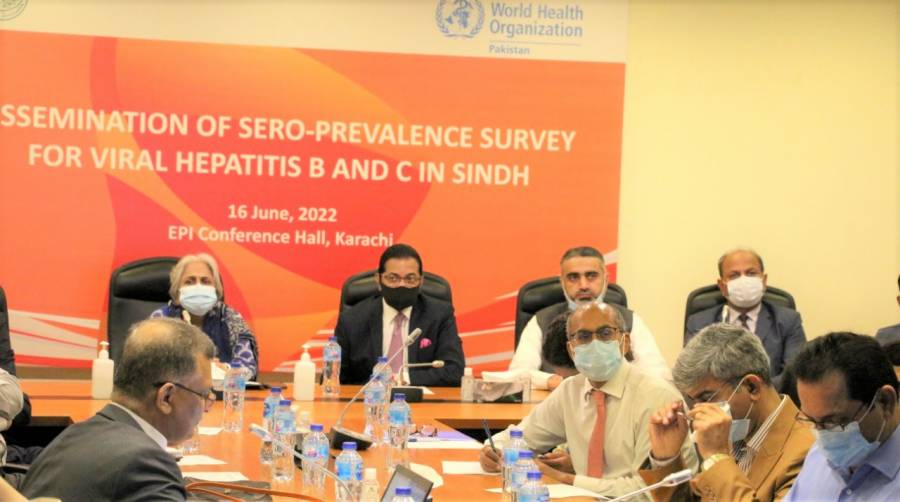Hepatitis C cases surge in Sindh: WHO Report
KARACHI: A seroprevalence survey done jointly by the World Health Organization (WHO) and the Sindh health department indicated that the prevalence of Hepatitis C climbed to 6.1% in Sindh from 5% in 2008, but the prevalence of Hepatitis B decreased significantly from 2.5% to 1.05 %.
Hepatitis C and B cases in Sindh Pakistan
The survey also revealed a substantial relationship between family illness transmission and exposure to diseased bodily fluids.
Other healthcare-related risk factors included obtaining therapeutic injections (12 per cent), blood transfusion (14.8 per cent), hospitalisation (13.8 per cent), and dental treatment (13.8 per cent) (12.9 per cent).
In 14.5% of instances, community expansion through traditional practises such as ear and nose piercing, tattooing, and head shaving was also a role.

Dr Palitha Mahipala, WHO Representative in Pakistan, and Dr Azra Pechuho, Sindh Health Minister, presented the findings of the seroprevalence study on viral Hepatitis B, C, and D as well as HIV during a ceremony held at the provincial EPI cell in Karachi.
According to WHO authorities, the World Health Organization (WHO) provided technical and financial support to conduct the seroprevalence study on Viral Hepatitis B, C, and D and HIV in 29 districts of the Sindh province.
The seroprevalence study was the first of its sort in Pakistan, in which HIV/AIDS was included, and data on seroprevalence was simultaneously obtained.
During the cross-sectional population survey, 5 771 persons from 1160 households were tested for viral growth in Hepatitis C patients B, C & D and HIV using Rapid Diagnostic Test Kits authorised by the World Health Organization.
47.5 per cent of men, 52.4% of women, and eight transgender individuals (0.1 per cent) participated in the poll.
Dr Azra Pechuho praised WHO for providing technical and financial assistance for the survey and cited the introduction of hepatitis B birth doses as one of the important interventions for reducing the incidence of hepatitis 'B' virus in the province.

She also emphasised the need to institutionalise hepatitis 'B' birth dose within 24 hours of birth throughout the province, adding that the Sindh government is doing everything possible to expand the detection and treatment of Hepatitis and HIV up to the level of Primary Health Care (PHC) – RHCs and BHUs.
Dr Palitha Mahipala, WHO Representative in Pakistan, praised the efforts of the Sindh Health Department to implement institutional reforms to extend viral hepatitis services throughout the province.
As part of the UN's commitment to the Sustainable Development Goal (SDG), Dr Palitha Mahipala guaranteed the Sindh Health Department of WHO's full technical cooperation in eradicating viral hepatitis by 2030.
Prevention of Hepatitis C
Hepatitis C cannot be prevented by vaccination. HCV infection can be prevented by avoiding contact with blood that has been tainted with HCV.
When a person comes into touch with blood from an infected individual, hepatitis C can be transmitted. In many parts of the world, HCV is most often spread through intravenous drug use.
The easiest approach to avoid contracting HCV is to quit injecting medications. Government and philanthropists can reduce the spread of HCV in your local community by implementing preventative measures, including medication-assisted therapy and syringe services programmes.
Using condoms to prevent unprotected sexual exposure has been found to minimise the risk of sexually transmitted infections, even if the likelihood of sexual transmission of HCV is minimal.
Transmission of Hepatitis C
People who inject drugs have a higher chance of contracting HCV since the virus is largely disseminated through contact with contaminated blood.
Additionally, HCV can be passed down through the bloodstream from an infected woman to her unborn child, from uncontrolled tattoos or body piercings, or by sharing personal belongings that may have been contaminated with infected blood in proportions too tiny to detect.
People with several sex partners or males who only have intercourse with other men are more likely to get HCV through sexual contact with an infected partner than the general population.
Hepatitis C Can Be Treated Effectively
In the last few years, new drugs for the treatment of the hepatitis C virus (HCV) have been approved.
There are fewer adverse effects and no need for injections, making these therapies far superior to what was previously offered.
More than 95% of individuals who take one of many direct-acting antiviral HCV therapies are cured within 8 to 12 weeks.
People with HCV infection have a lower mortality rate when treated with HCV, and those who are cured of HCV have a lower risk of developing cirrhosis or liver cancer.
Advertisement
Trending
Popular
Hair loss: Discovery uncovers key stem cells that could reverse ...
-
Broccoli sprout compound may help lower ...
11:31 AM, 25 Feb, 2025 -
Gas Pain vs. Heart Attack: How to tell ...
09:00 PM, 22 Feb, 2025 -
Coconut oil supplement shows promise ...
08:00 PM, 20 Feb, 2025 -
Normal vitamin B12 levels may still ...
05:00 PM, 19 Feb, 2025






